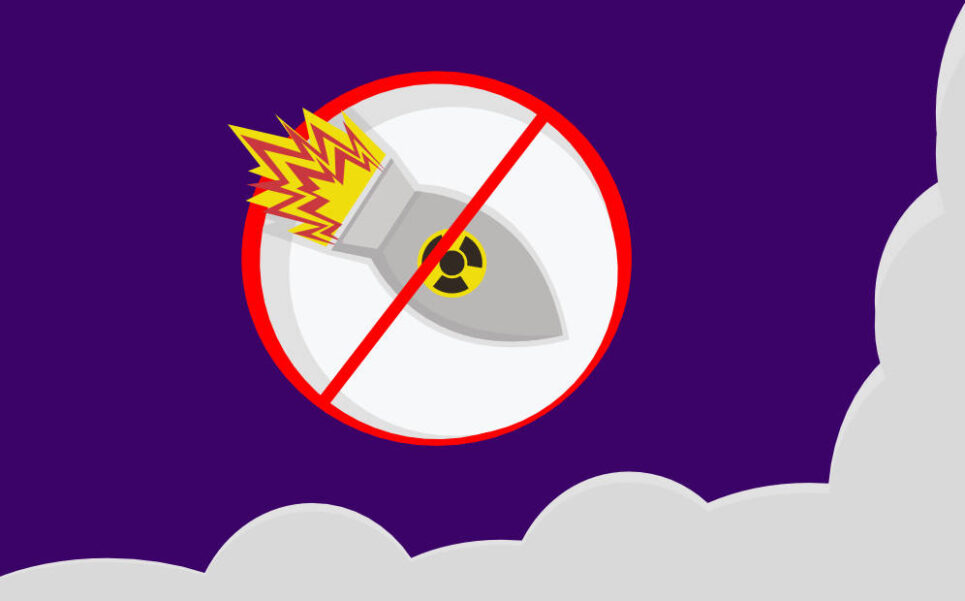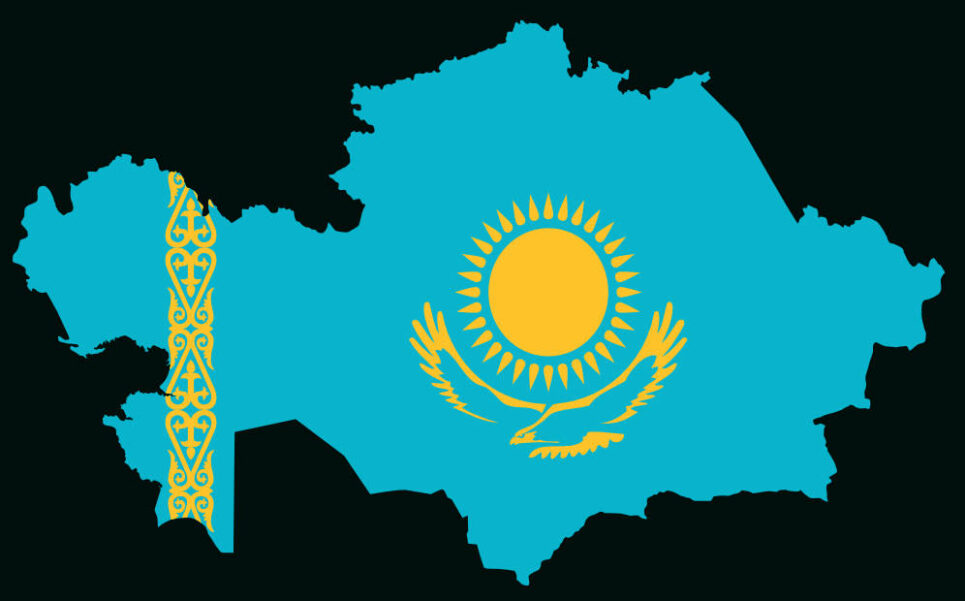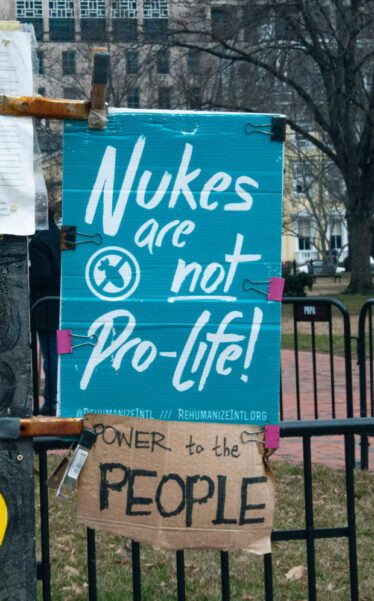It is 2024 and we do not live in a nuclear-free world. To be more precise, around 12,705 nuclear weapons remain. Countries possessing such weapons have well-funded, long-term plans to modernize their nuclear arsenals.
Knowing how extremely dangerous it is, you would think that it would have vanished decades ago. It hasn’t.
Frustration has been growing regarding what is perceived as the slow pace of nuclear disarmament. This frustration has been put into sharper focus with growing concerns about the catastrophic humanitarian consequences of the use of even a single nuclear weapon, let alone a regional or global nuclear war.
Fighting it
The way we have come up to stand against such a problem is by developing anti-nuclear organizations. Many of them oppose uranium mining, nuclear power, and/or nuclear weapons.
Furthermore, anti-nuclear groups have undertaken public protests and acts of civil disobedience which have included occupations at nuclear plant sites.
Some of the most influential groups in the anti-nuclear movement have had members who were elite scientists, including several Nobel Laureates and many nuclear physicists.
Anti-nuclear groups have undertaken public protests and acts of civil disobedience which have included occupations at nuclear plant sites. Other salient strategies have included lobbying, petitioning government authorities, influencing public policy through referendum campaigns, and involvement in elections.
Nuclear explosions produce both immediate and delayed destructive effects. Immediate effects (blast, thermal radiation, prompt ionizing radiation) are produced and cause significant destruction within seconds or minutes of a nuclear detonation. The delayed effects (radioactive fallout and other possible environmental effects) inflict damage over an extended period ranging from hours to centuries and can cause adverse effects in locations very distant from the site of the detonation.
The ATOM Project
The ATOM (Abolish Testing Our Mission) Project is an international campaign designed to do more than create awareness surrounding the human and environmental devastation caused by nuclear weapons testing.
It hopes to effect real and lasting change by engaging millions of global citizens to permanently stop nuclear weapons testing by joining together to show the world’s leaders that the world’s citizens deserve and demand a world without nuclear weapons testing.
Their goals are simply but a huge undertaking.
The campaign is an initiative of the Nazarbayev Center whose mission includes the “promotion of nuclear responsibility, nuclear disarmament, and nuclear nonproliferation according to the vision of President Nursultan Nazarbayev (Kazakhstan).”

In 2013, the ATOM Project began a world tour visiting Moscow, New York City, Washington, D.C., Vienna, Berlin, Madrid, and Tokyo. On September 4, 2013, the ATOM Project presented its project to the United Nations headquarters in New York City along the framework of International Day Against Nuclear Testing.
On September 11, they presented the project at the Carnegie Endowment for International Peace, Northern Virginia Community College, and the Embassy of Kazakhstan. The project visited Vienna on October 30 presenting to the Kazakhstan Student Society and the governing body of the Comprehensive Nuclear Test Ban Treaty.
On May 6, 2014, the five largest nuclear powers signed a guarantee not to use nuclear weapons in the territory of Central Asia. The powers: Britain, China, Russia, USA, and France signed the ‘Protocol to the Treaty on a Nuclear-Weapon-Free Zone in Central Asia’ (Kazakhstan, Kyrgyzstan, Tajikistan, Turkmenistan, and Uzbekistan).
2016 marked the 25th anniversary of the closure of Kazakhstan’s Semipalatinsk Test Site, where the Soviet Union conducted extensive nuclear tests over four decades.
On August 29, 2016, Astana hosted a plenary session of the international conference “Building a Nuclear-Weapon-Free World.” The keynote speakers included President Nazarbayev, Chairman of the Senate Kassym-Jomart Tokayev, and Executive Secretary of the Preparatory Commission of the CTBTO Lassina Zerbo.
The main outcome of the conference was the adoption of the declaration “The Astana Vision: From a Radioactive Haze to a Nuclear-Weapon-Free World.” The conference was held to coincide with the 25th anniversary of the closure of the Semipalatinsk testing site.
Why Kazakhstan?
Kazakhstan was the site of decades of Soviet-era nuclear weapons testing which made 1.5 million Kazakhs suffer from radiation-related cancers and physical deformities, which continue to be passed to new generations. Kazakhstan was once the fourth largest nuclear power in the world after inheriting the Soviet Union’s nuclear weapons.
But in 1991, Kazakhstan became the first country to shut down a nuclear test site and to renounce nuclear weapons voluntarily and unilaterally. The country continues to be a global leader in the fight for a world free of nuclear weapons and nuclear weapons testing.

An important fact to always keep in mind is that the effects of exposure to nuclear weapons can be passed on to new generations. Radiation exposure causes physical harm at the cellular level. If one of those cells is a reproductive cell, such as a sperm or egg cell, the damaging effects may not show up for multiple generations.
Forty-five years ago, Karipbek was born in a small village, just miles from where the Soviet Union conducted more than 450 nuclear weapons tests. Those tests exposed his parents to radiation and resulted in Karipbek being born without arms.
Karipbek has overcome many obstacles to become an anti-nuclear weapons activist and renowned artist, whose works have been shown around the world. Today, Karipbek often paints portraits of the victims of nuclear testing and, as an honorary Ambassador to The ATOM Project, speaks out against nuclear weapons at conferences and events held in such places as the United Nations and the United States Congress.
The ATOM Project (est. August 2012) is an international campaign by the Nazarbayev Center of Kazakhstan. The primary goal of the campaign is to build international support for the abolishment of nuclear testing. ATOM stands for “Abolish Testing. Our Mission.” The goal is to achieve in force the Comprehensive Nuclear Test Ban Treaty through online petitions and other methods.
Why is it so important?
In 1949, the Soviet nuclear weapons program chose a test site right outside the Kazakhstan city of Semipalatinsk. Four hundred and fifty-six nuclear weapons tests were conducted for 40 years (from 1949 until 1989).
The people of Semey, as the city is now known, were not asked, did not know, and certainly had no idea of what the implications would be regarding these tests.

Sadly, the people of Semey tell the story of what nuclear weapon testing does. They are a warning for the future.
The United Nations adopted the Comprehensive Nuclear Test Ban Treaty in September 1996. It is a multilateral treaty to ban nuclear weapons test explosions and any other nuclear explosions, for both civilian and military purposes. The problem is that it has not entered into force.
There are some important facts about this treaty. As of this moment, 10 countries have not signed the Comprehensive Nuclear Test Ban Treaty, they are Buthan, Democratic People’s Republic of Korea, India, Mauritius, Pakistan, Saudi Arabia, Somalia, South Sudan, Syrian Arab Republic, and Tonga.
Nine states have signed but not ratified the treaty, they are China, Egypt, Iran, Israel, Nepal, Papua New Guinea, Srilanda, the United States, and Yemen.
It is important to clarify that on October 13, 1999, the United States Senate rejected ratification of the CTBT. During his 2008 presidential election campaign Barack Obama said “As president, I will reach out to the Senate to secure the ratification of the CTBT at the earliest practical date.”
The United States has stated that its ratification of the CTBT is conditional upon:
1. The conduct of a Science-Based Stockpile Stewardship Program to ensure a high level of confidence in the safety and reliability of nuclear weapons in the active stockpile.
2. The maintenance of modern nuclear laboratory facilities and programs in theoretical and exploratory nuclear technology which will attract, retain, and ensure the continued application of our human scientific resources to those programs on which continued progress in nuclear technology depends.
3. The maintenance of the basic capability to resume nuclear test activities prohibited by the CTBT should the United States cease to be bound to adhere to this treaty.
4. Continuation of a comprehensive research and development program to improve our treaty monitoring capabilities and operations.
5. The continuing development of a broad range of intelligence gathering and analytical capabilities and operations to ensure accurate and comprehensive information on worldwide nuclear arsenals, nuclear weapons development programs, and related nuclear programs.
The sad conclusion
There are many dangers surrounding nuclear testing.
Thousands of people today continue to suffer serious medical difficulties as a result of exposure to nuclear weapons testing. Testing harms not only the generation exposed, but its horrific effects can be passed to future generations. Nuclear weapon testing also harms the environment and makes the weapons and nuclear materials involved more vulnerable to acquisition by international terrorists.


